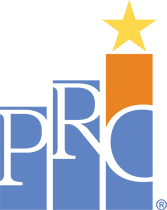It’s a typical Tuesday afternoon on the 5th floor of the hospital. A new patient is admitted while Nurse A is halfway through her shift. Nurse A is a very cheerful, compassionate nurse that often goes above and beyond the call of duty to ensure the patient is comfortable. Nurse A provides exceptional care and consideration to the little things. The new patient feels cared for, safe, comfortable. Shift change happens, and the patient now has Nurse B. Nurse B is a good nurse as well, she is cheerful and compassionate about helping patients, but she is not engaged with her work as she once was. Her personality is very similar to Nurse A, however her bedside manor appears more checked out and she’s not as in-tune to doing the little things as Nurse A was. The patient, while still cared for, notices a big difference as we all likely would in the employee engagement. Nurse B is not a bad nurse, she simply does not provide the extra initiative that Nurse A provided in the shift before her. In fact, had the patient never met Nurse A, they might never have noticed a difference in Nurse B.
In healthcare, particularly in a hospital setting where a patient may have an extended stay, inconsistencies in staff can go unnoticed by most of the staff, but I can assure you it does not go unnoticed by the patient and family members that may be involved. Day shift, night shift, respiratory therapists, phlebotomists, the doctor on call this day versus that day all have different personalities and communication styles. While different styles are perfectly fine in that I don’t believe anyone expects service will be exactly the same every time there is an interaction with a patient, consistency or lack thereof across the care team can make all the difference in a good experience or a bad one for the patient.
Part of avoiding inconsistencies in staff member care is training on patient interactions using role playing and modeling techniques. This allows everyone to be cross trained on how to effectively and efficiently provide excellent care from the perspective of the patient across the care team. The other part that many organizations face, even outside of healthcare, is the difference between an engaged staff member versus one that is not engaged. This is more difficult to train on because it has to do with what staff is willing to put of themselves into their work. It’s best to start at the beginning of employment and find the most qualified applicants that also fit seamlessly into the care team. It’s important to assess not only skill set, but also the applicants’ desire to provide excellent care to their patients. Once an applicant is found that is a good fit for the care team then it is up to leadership to provide the necessary interpersonal and workplace support to retain and keep their staff engaged.
The hospital has two good nurses in Nurse A and Nurse B, however knowing the reasons Nurse B is not as engaged as Nurse A could be very helpful to understand. To provide an excellent experience every time requires avoiding these types of staff fluctuations and inconsistencies. Something as simple as providing a more consistent level of care where staff are emotionally committed to their job could benefit greatly for the overall patient experience.
Professional Research Consultants helps healthcare organizations monitor and enhance employee engagement. Our research provides organizational, supervisory, and team level reports with custom data and reporting tools that help C-suite executives lead change. This process helps leaders create a culture where employees are willing to invest more in their performance, and care is more consistent across the organization. PRC’s services include Employee Engagement Studies, Employee Exit Interview Studies, Patient Safety Studies (AHRQ) and Nursing Quality Assessment Studies.
By Cynthia A. King, PhD, Director of Client Organizational Development


